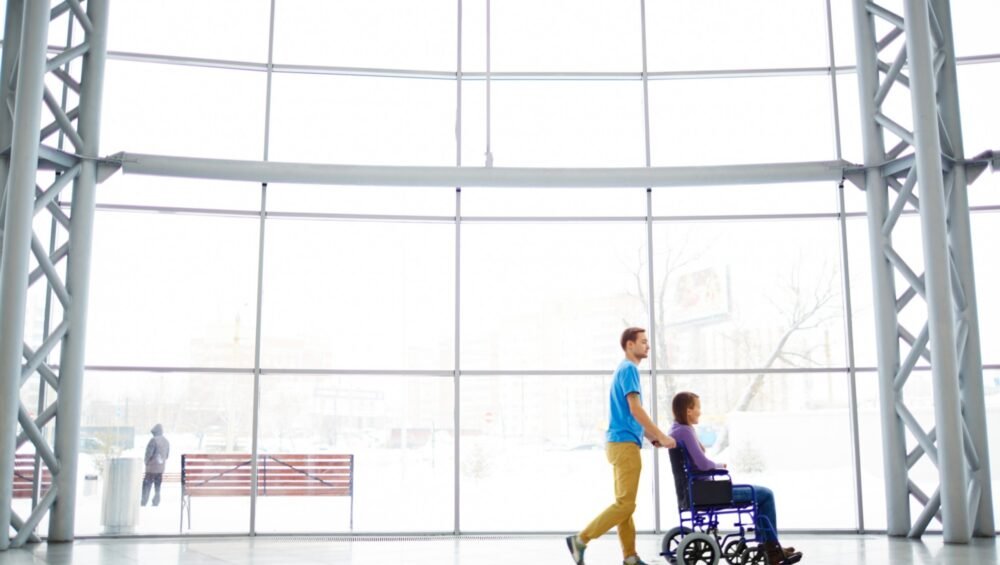TL;DR:
Two disability advocates—Oliver Morton-Evans and Dina Bassile—experienced travel disruptions at Melbourne Airport when Virgin Australia rejected their power wheelchairs over size and weight limits. The incidents, now sparking national conversation, have reignited calls for airlines to standardize accessibility rules and better accommodate mobility aids.
Stranded at Check-In: The Morton-Evans Delay Debacle
For Oliver Morton-Evans, an operations manager at a disability tech firm and a person with cerebral palsy, flying from Sydney to Melbourne should have been business as usual. But when preparing to return home, he was told his power wheelchair wouldn’t fit into the aircraft’s cargo hold.
Ground staff suggested he take a different carrier—Jetstar—instead. What followed was an eight-hour wait at the terminal, filled with uncertainty and exhaustion. Eventually, persistence won out: Morton-Evans boarded a Virgin Australia flight later that day—with the same wheelchair that had initially been refused.
While the situation was resolved, the emotional toll and lack of clarity exposed a deeper issue: inconsistent handling of accessibility equipment and a lack of staff training around disability inclusion.
Out-of-Pocket Agony: Bassile’s Last-Minute Scramble
Disability inclusion consultant Dina Bassile faced a similar ordeal days later when attempting to fly from Melbourne to Brisbane. Her motorised wheelchair, weighing about 160 kilograms, was flagged as exceeding the airline’s weight threshold.
The rejection came as a shock—she had flown multiple times on identical routes with the same equipment without issue. Forced to improvise, she purchased a last-minute $1,000 Qantas ticket to make the trip. “It’s not just about inconvenience,” Bassile said. “It’s about dignity and equality.”
Her experience highlights how arbitrary interpretations of “policy” can leave travellers with disabilities footing heavy costs, both financial and emotional.
Echoes of a Pattern: Advocates Demand Real Accountability
Morton-Evans and Bassile’s experiences have ignited a broader discussion about how airlines handle mobility aids. Disability advocates point out that air travel remains one of the most exclusionary spaces for people with physical disabilities, with inconsistent weight and size restrictions applied across carriers.
Virgin Australia has not commented publicly on these specific cases but reaffirmed its adherence to safety standards for cargo handling. Advocates, however, argue that policies prioritizing convenience over inclusion breach the spirit—if not the letter—of the Disability Discrimination Act 1992.
As one disability rights lawyer noted, “Equipment that enables mobility isn’t optional. Denying access because of weight limits without exploring alternatives isn’t just bad service—it’s systemic discrimination.”
Lifting Off to Equity: What Needs to Shift?
These stories shine a light on the gap between policy compliance and practical accessibility. Airlines can take immediate steps to restore trust and inclusion:
- Audit Policies: Collaborate with disability experts to align cargo, seating, and boarding protocols with lived-experience insights.
- Enhance Staff Training: Ensure frontline employees understand both the legal obligations and human realities of accessibility.
- Increase Transparency: Publish clear weight and size limits for mobility devices across all aircraft models.
- Empower Passengers: Create direct escalation channels for accessibility issues before they become public crises.
For regulators, the upcoming Aviation Disability Standards present an opportunity to set national benchmarks that ensure consistency across all airlines operating in Australia.
Practical Tips for Travellers
If you rely on a mobility aid or travel with assistive equipment, here’s how to prepare for smoother flights:
- Check Equipment Specs: Compare your wheelchair or scooter dimensions with aircraft cargo hold limits before booking.
- Confirm in Writing: Always get airline approval for mobility devices in advance and save the correspondence.
- Have a Backup Plan: Keep contact details for accessible taxi or accommodation options in case of last-minute delays.
- Report Incidents: Lodge accessibility complaints with the airline and the Australian Human Rights Commission if discrimination occurs.
Final Thoughts: Clearing the Runway for Inclusion
Oliver Morton-Evans and Dina Bassile’s stories are reminders that accessibility isn’t a luxury—it’s a right. Their persistence transformed frustration into awareness, amplifying the urgent call for national consistency in airline accessibility standards.
For the NDIS community and beyond, this moment reflects a larger truth: inclusion must be built into systems, not added as an afterthought. Whether on land or in the air, independence shouldn’t hinge on arbitrary rules.
FAQs
- What happened at Melbourne Airport?
Two wheelchair users were denied boarding on separate Virgin Australia flights due to size and weight restrictions on their power chairs. - Why are advocates raising concerns?
They argue that inconsistent policies and poor staff training lead to discrimination and unnecessary distress for passengers with disabilities. - What laws protect travellers with disabilities?
The Disability Discrimination Act 1992 requires airlines to provide reasonable adjustments to accommodate people with disabilities. - How can airlines prevent incidents like this?
By standardising accessibility policies, improving training, and ensuring transparent communication before boarding. - What’s next for accessibility in aviation?
The federal government’s Aviation Disability Standards—currently under review—aim to create national benchmarks for fair treatment across all airlines.






